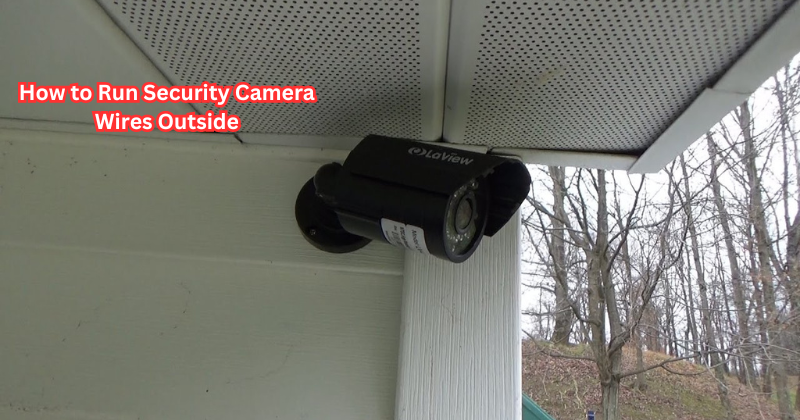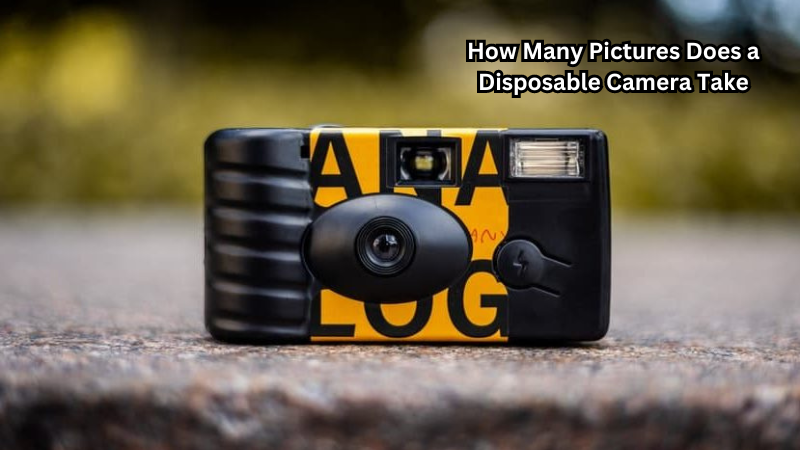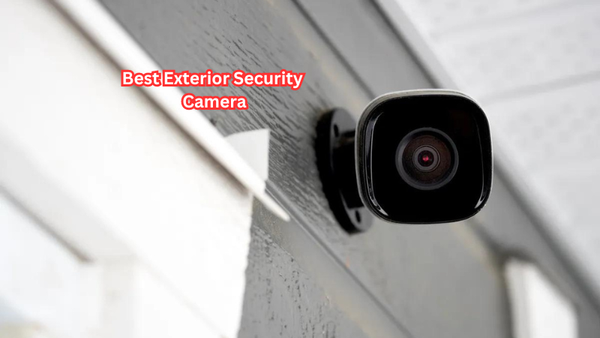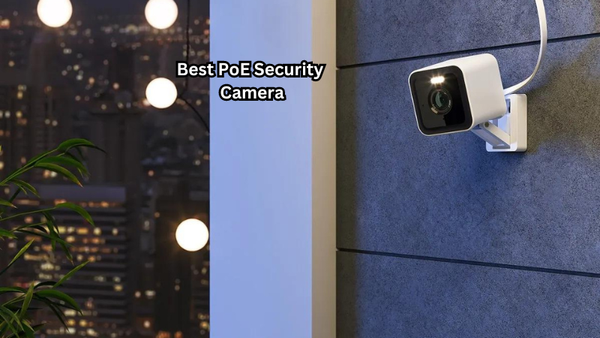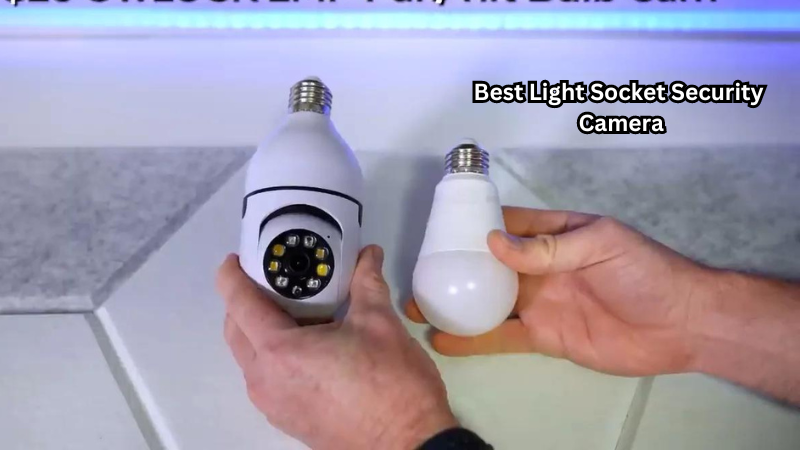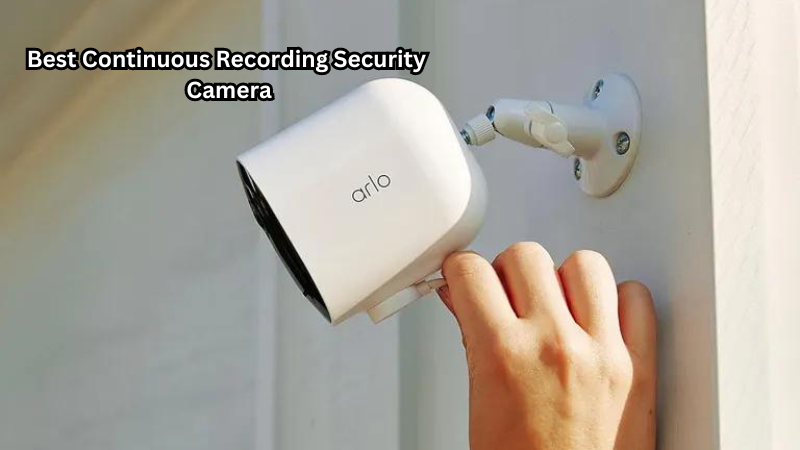Setting up security cameras outside your home or business is a proactive step toward enhancing safety and surveillance.
Running security camera wires outdoors requires careful planning and execution to ensure optimal performance and durability. Properly securing and concealing wires not only protects them from environmental elements but also maintains the aesthetics of your property.
In this guide, we will delve into expert tips and best practices on how to run security camera wires outside effectively. From selecting the right cables and tools to strategically routing and concealing wires, you'll learn essential techniques to create a reliable outdoor camera system that enhances security without compromising the visual appeal of your space.
Importance of Properly Running Security Camera Wires Outside
Before we dive into the specifics of running security camera wires outside, it's crucial to understand why this task is essential.
Ensures Optimal Performance
Improperly installed or exposed wires can cause signal interference and disrupt the performance of your security cameras. This can lead to blurry footage, dropped connections, or even complete system failure. By properly running and securing wires, you can minimize the risk of interference and ensure your cameras function at their best.
Protects Wires from Environmental Elements
Outdoor security cameras are exposed to all kinds of weather conditions, from extreme heat to heavy rain and snow. If the wires are not adequately protected, they can get damaged or corroded over time, leading to malfunctions or even permanent damage. By running wires correctly, you can keep them safe from environmental elements and extend their lifespan.
Maintains Aesthetics
No one wants unsightly wires ruining the appearance of their property. By carefully planning and concealing wires, you can maintain the visual appeal of your space while still having a robust security system in place.
Security camera systems are an investment, and properly running wires outside can protect that investment and ensure you get the most out of it.
The Types of Security Cameras You Can Install Outside
There are several types of security cameras available in the market, each with its unique features and installation requirements. Before running wires outside, you must select the type of camera that best suits your surveillance needs. Some common options include:
- Wired Cameras - These cameras require a physical cable connection to transmit data to a recording device or monitor. They offer reliable performance but may be more challenging to install and conceal wires.
- Wireless Cameras - These cameras use a wireless connection, such as Wi-Fi, to transmit data. They are easier to install but may experience interference or signal loss in certain environments.
- Power over Ethernet (PoE) Cameras - These cameras use one cable for both power and data transmission, making them an ideal option for outdoor installations. They offer reliable performance and are relatively easy to install and conceal wires. Ethernet cable is also more durable and weather-resistant compared to other types of cables.
Choosing the Right Cables and Tools
When it comes to running security camera wires outside, the type of cables and tools you use is crucial. Here are some essential considerations for selecting the right materials:
Use Weatherproof Cables
Outdoor security camera wires should be able to withstand exposure to various weather conditions. Look for cables that are specifically designed for outdoor use and can withstand extreme temperatures, moisture, and UV rays. These cables are typically labeled as "weatherproof" or "outdoor rated." Security camera cables typically come in two types:
- Siamese Cables - These cables have two wires bundled together, one for power and one for data transmission. They are often used for wired or PoE cameras.
- Cat5 or Cat6 Ethernet Cables - These cables are used for PoE cameras and offer a more streamlined appearance as they only require one cable to be run.
Consider the Length and Gauge of the Cable
The length and gauge of your security camera wire will depend on the distance between your cameras and the recording unit. For longer distances, you'll need thicker cables with a lower gauge to ensure the signal remains strong.
Consider the length and gauge of your cables carefully to avoid any signal loss or performance issues. Security camera wiring typically comes in 18-gauge or 22-gauge options, with 18-gauge being thicker and more suitable for longer distances.
Invest in Quality Tools
To properly run security camera wires outside, you'll need a variety of tools, such as wire cutters, strippers, crimping tools, and cable ties. It's essential to invest in high-quality tools that are specifically designed for the task at hand. This will not only make the installation process more efficient but also ensure that your wires are handled with care to avoid any damage.
How to Run Security Camera Wires Outside
Now that you have all the necessary materials and tools, it's time to start running your security camera wires outside. Here are some steps to follow for a successful installation:
Plan Your Camera Placement
Before running any wires, plan out where you want to install your cameras. This will help determine the best route for the cables and ensure they reach their designated locations without any issues. Consider factors such as the location of power outlets, Wi-Fi signals, and potential obstacles.
Choose a Concealment Method
There are various ways to conceal security camera wires outside, including running them through walls or attics, burying them underground, or using cable covers or conduits. Select the method that best suits your property and provides adequate protection for the wires.
To install security camera wiring through walls or attics, you may need to cut into drywall and drill holes for the wires to pass through. Burying wires underground will require digging and possibly renting a trencher. Cable covers or conduits can be attached to surfaces such as walls or fences to contain the wires while still keeping them accessible for maintenance.
Use Cable Clips or Ties for Securing Wires
Once you have run your cables, use cable clips or ties to secure them in place and prevent them from hanging loosely. This will not only protect the wires but also maintain a neat and tidy appearance.
Be sure not to over-tighten the ties, as this may damage the cables. Fish tape, a tool used to pull wires through walls or conduits, can also be helpful in securing cables.
Avoid Obstacles and Hazards
When running security camera wires outside, be mindful of any potential obstacles or hazards that could damage the cables. These may include sharp edges, power tools, or even animals. Take precautions to avoid these hazards and ensure your wires are kept safe during installation.
Test the Connection
Before completing the installation, be sure to test the connection between your cameras and the recording unit. This will ensure that all wires are properly connected and functioning correctly. If there are any issues, you may need to double-check your connections or consult a professional for assistance.
How to Hide Security Camera Wires Inside Your House
In some cases, you may need to run security camera wires inside your house to connect them to a recording unit or power source. Here are some tips on how to hide these wires:
Use Wall Plates and Conduit - Install wall plates for cable entry points and use conduit to conceal the visible portion of the wire. This method provides a clean and professional look.
Run Wires Behind Baseboards or Coves - If you have baseboards or cove moldings, you can run the wires behind them for a more hidden appearance. Just be sure to use cable clips to secure the wires and prevent them from shifting.
Use Existing Wiring Channels - If you have existing wiring channels, such as phone lines or cable TV wiring, you can utilize these to run your security camera wires. This will save you time and effort when creating new channels.
Utilize Wall Mounts or Brackets - For a more discreet installation, consider using wall mounts or brackets to secure your cameras against the wall. This will also help hide any visible wires behind the camera itself.
Consult a Professional - If you're unsure about how to properly hide your security camera wires, it's best to consult a professional for assistance. They will have the expertise and tools necessary to ensure a seamless and concealed installation.
Install security cameras is a great way to enhance the safety and security of your home or business. However, installing them outdoors requires proper planning and execution to ensure optimal performance and long-term durability.
FAQs
How should I protect security camera wires from harsh weather conditions?
To safeguard security cameras wires from harsh weather, consider using conduit or PVC piping to shield the cables. Additionally, waterproof junction boxes can help secure connections and prevent moisture damage in outdoor installations.
Can security camera wire be exposed?
While security camera wires can be exposed, it's not recommended as they may be subject to damage from external factors such as weather or animals. It's best to conceal the wires using one of the methods mentioned above for optimal protection and a cleaner appearance.
Can I run my security camera wires alongside electrical wiring?
It's generally not recommended to run security camera wires alongside electrical wiring, as the power currents can cause interference in the camera's signal. It's best to keep these wires separated and utilize separate channels for each type of wiring.
What type of security camera cable should I use for outdoor installations?
For outdoor security camera wiring, it's recommended to use weatherproof and durable cables such as shielded twisted pair (STP) or Siamese cables. These cables are designed to withstand environmental elements and ensure reliable connectivity for your security camera system.
Conclusion
In conclusion, running security camera wires outside is a crucial aspect of establishing a reliable and effective outdoor security camera system.
By following best practices such as using weatherproof cables, protecting wires from environmental factors, and strategically routing and concealing them, you can ensure the long-term performance and durability of your security cameras. Proper installation techniques not only safeguard the integrity of the system but also contribute to the overall aesthetics of your property.
Whether extending the reach of your security camera system, burying wires underground, or securing connections in junction boxes, attention to detail and adherence to safety standards are paramount. With careful planning and implementation, you can create a robust outdoor security camera setup that enhances the safety and surveillance capabilities of your premises.
